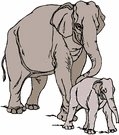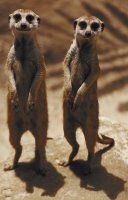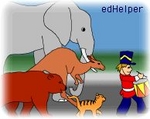
Worksheets and No Prep Teaching Resources
Reading Comprehension Worksheets
Animal Themes
Mammals
Grasslands

Animal Themes
 Worksheets and No Prep Teaching Resources Reading Comprehension Worksheets Animal Themes Mammals Grasslands |
 Animal Themes |
| edHelper's suggested reading level: | grades 6 to 8 | |
| Flesch-Kincaid grade level: | 6.96 |
|
Meerkats
By Vickie Chao |

|
 1 Out on the savannah of southern Africa lives a group of highly sociable animals called meerkats. Meerkats are extremely active during the day. Whenever they venture out of their underground hideaways, they like to stick close to each other, as they are firm believers of "safety in numbers." Even when they rush out to look for things to eat, they never fail to be on guard. To be sure that they themselves do not end up being some other animal's lunch, they always have at least one member standing upright on its hind legs and tail (the "third leg") to look out for danger. If it spots an enemy, it issues a screeching call to alert the group. Once the alarm is sounded, everyone dashes back home for cover. They do not come out again until the threat is gone.
1 Out on the savannah of southern Africa lives a group of highly sociable animals called meerkats. Meerkats are extremely active during the day. Whenever they venture out of their underground hideaways, they like to stick close to each other, as they are firm believers of "safety in numbers." Even when they rush out to look for things to eat, they never fail to be on guard. To be sure that they themselves do not end up being some other animal's lunch, they always have at least one member standing upright on its hind legs and tail (the "third leg") to look out for danger. If it spots an enemy, it issues a screeching call to alert the group. Once the alarm is sounded, everyone dashes back home for cover. They do not come out again until the threat is gone. |
Create Weekly Reading Books
Prepare for an entire week at once! |
| Leave your feedback on Meerkats (use this link if you found an error in the story) |
 |
Animal Themes
|
 |
Mammals
|
 |
Grasslands
|
|
|